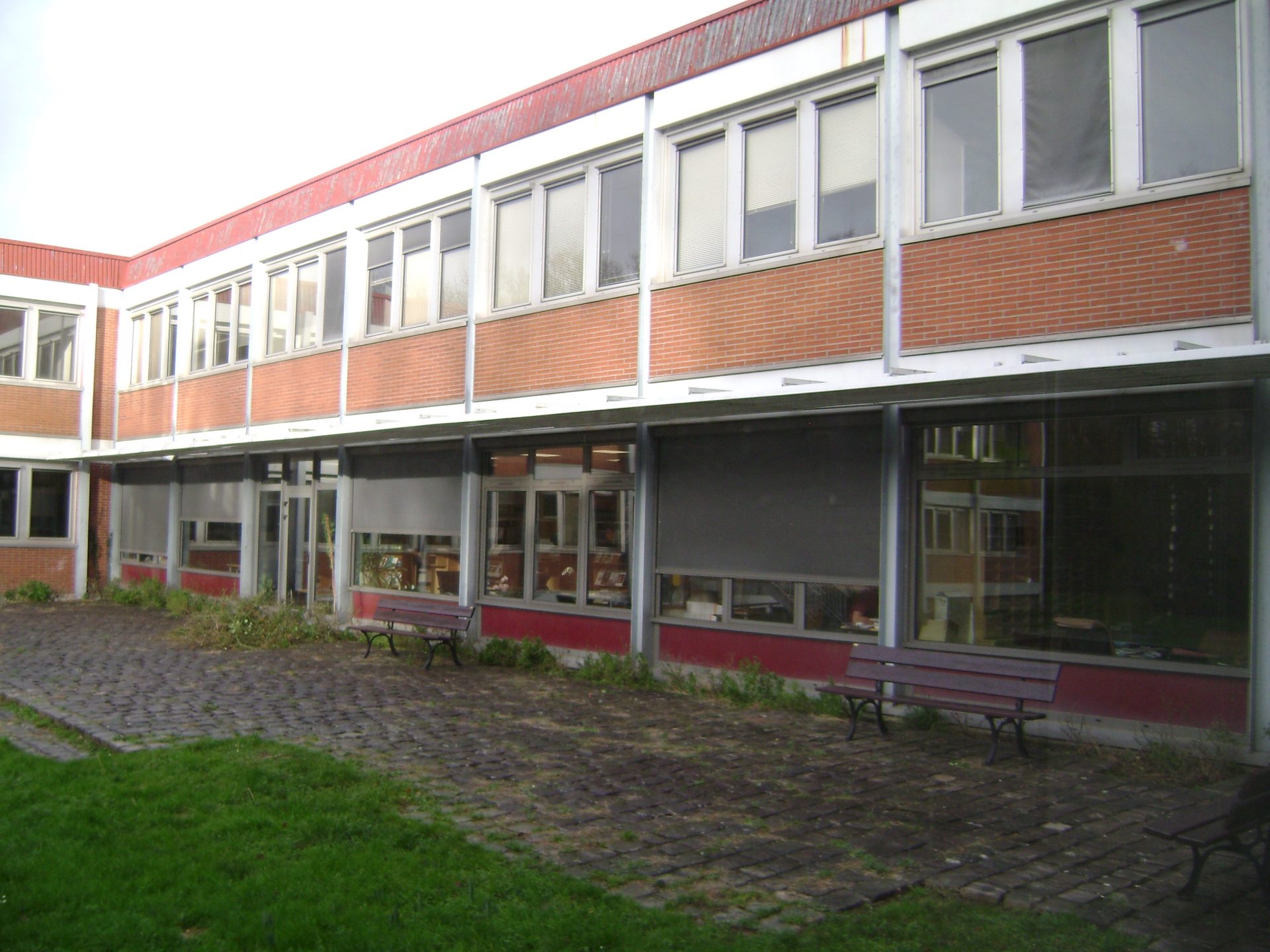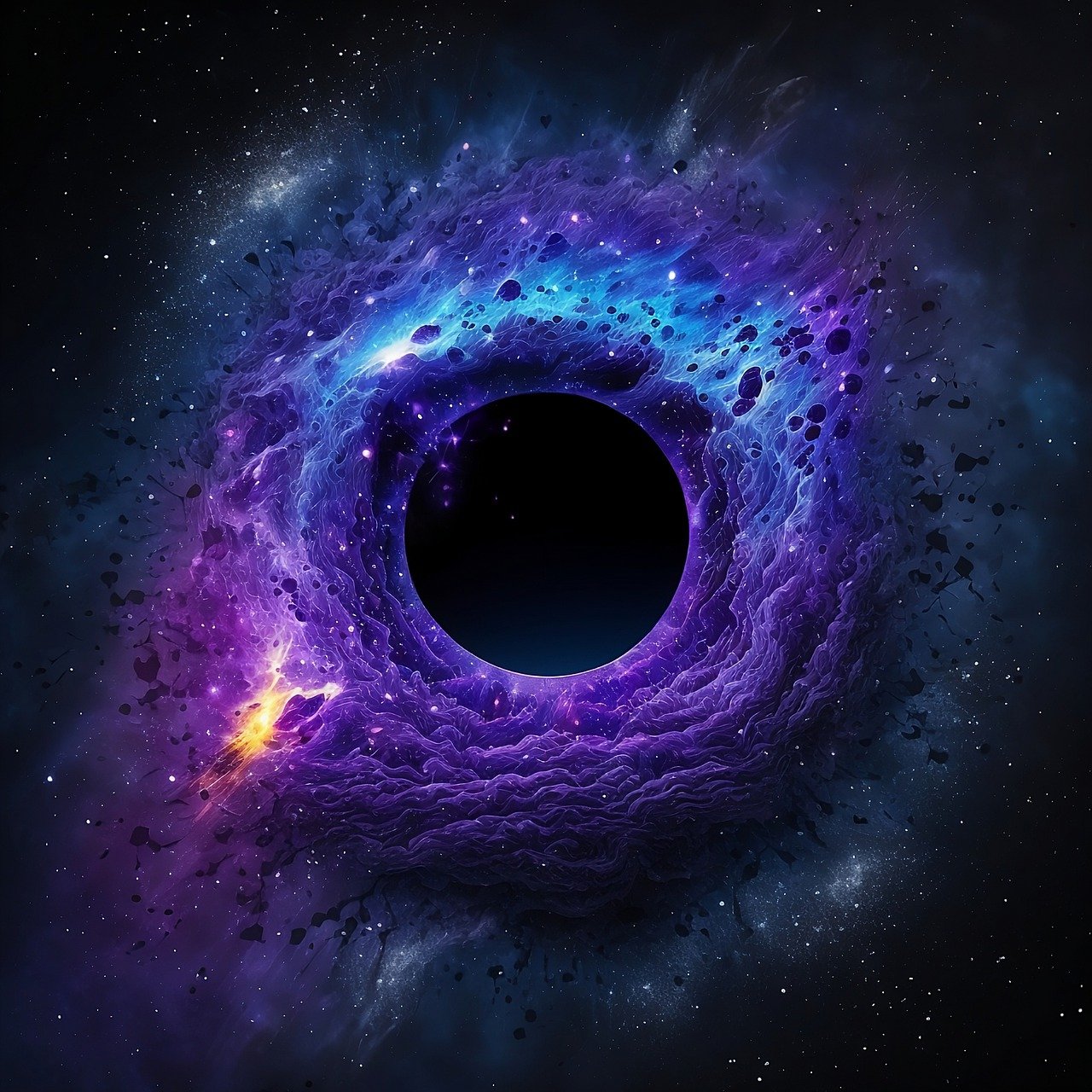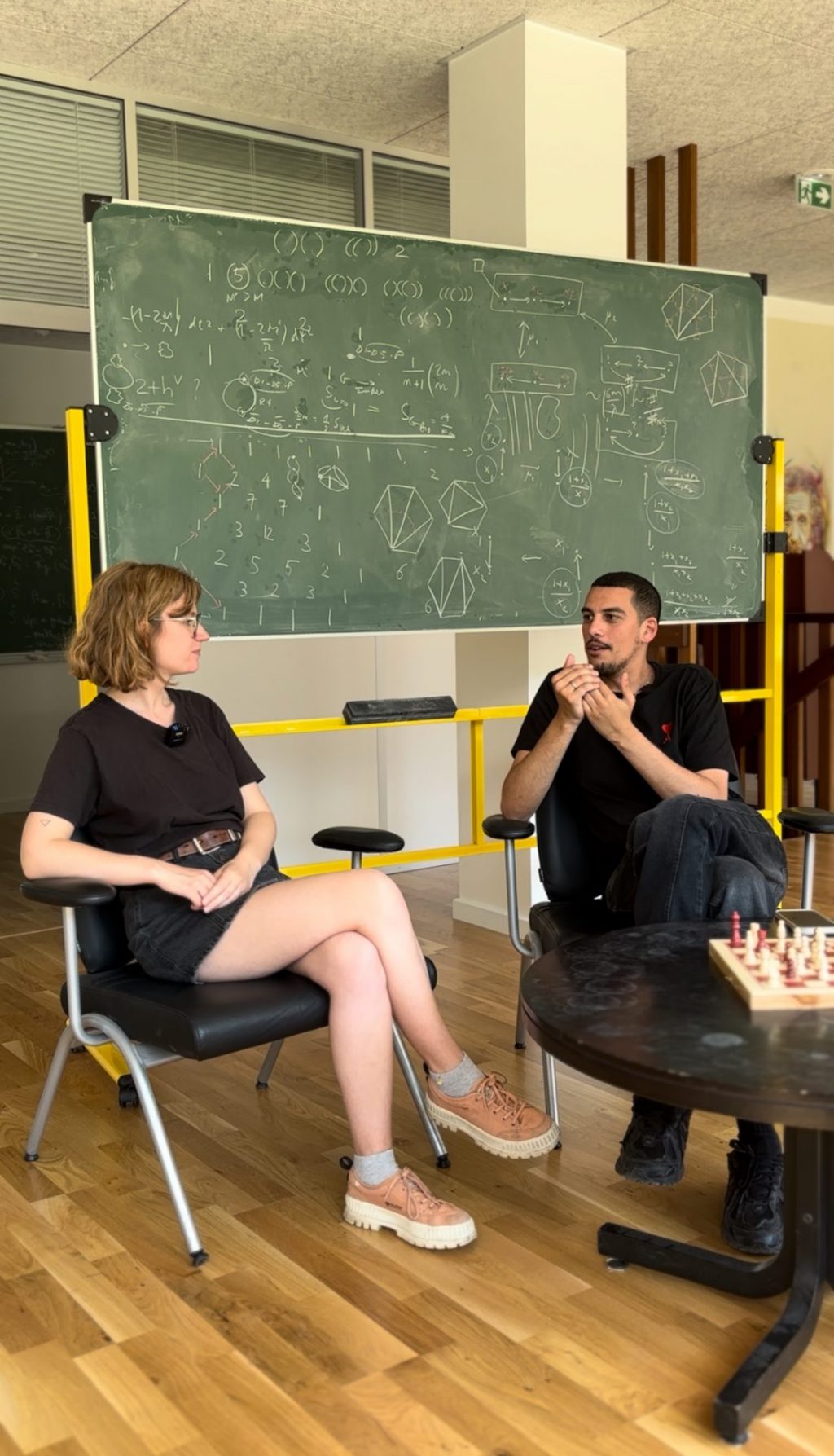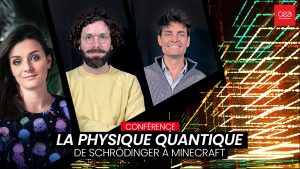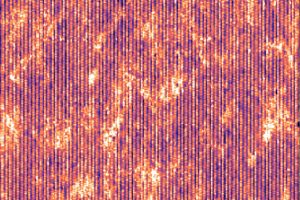Directory
Headlines
-
A rap star at IPhT!
As part of the latest live conference on quantum physics organised by DCom’s Digital Communications group, an artist and rapper, Durden, has agreed to give his point of view on principles of physics that particularly interest him. Miniature : Durden and Kiara Hansene (IPhT). Crédit: CEA

Agenda
8 September 2025
11h00 – 12h00
TBA
Salle Claude Itzykson, Bât. 774
16 September 2025
11h00 – 12h30
Olivier RIVOIRE
7 October 2025
11h00 – 12h30
Rémi MONASSON
Aucun événement




